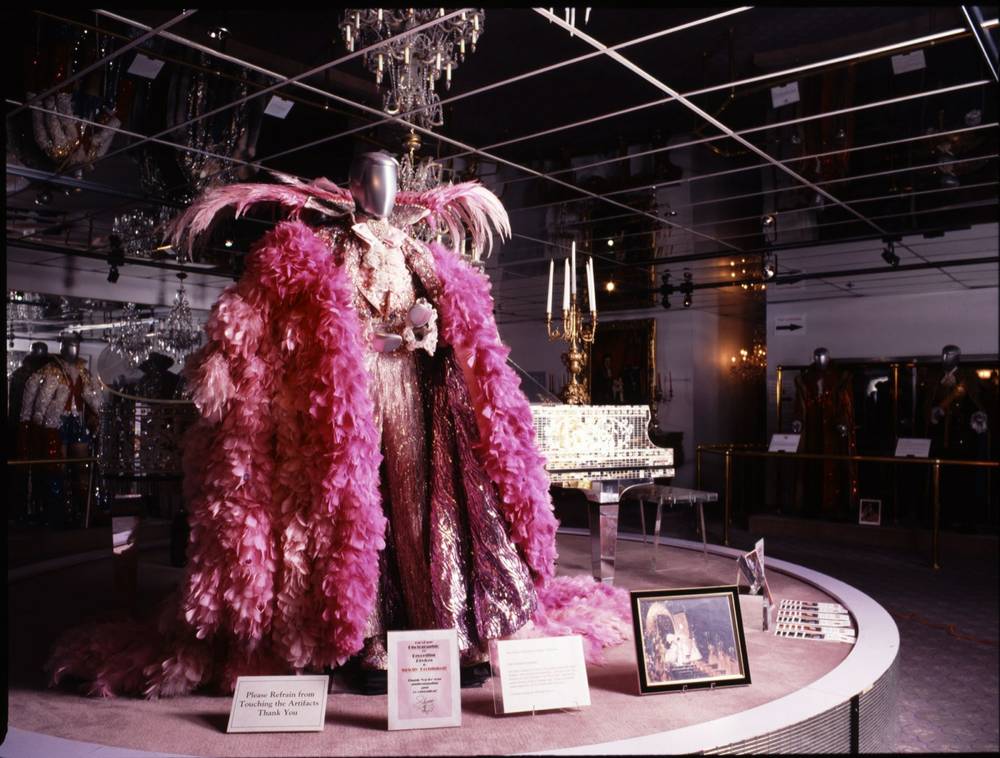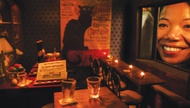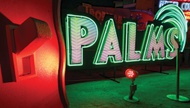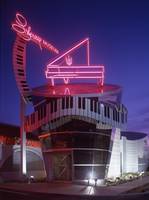I cried at the Liberace Museum today.
It was the story of Liberace’s final performance at Radio City Music Hall that did it. AIDS-stricken, but still in full beaded regalia, he poured his heart out for New York City in a loving rendition of Gershwin’s “Rhapsody in Blue.” Somewhere between the hot pink “VolksRoyce” (a 1970s gas-conscious cross between a Volkswagen and a Rolls Royce) and the 14-karat yellow-gold, jewel-encrusted “Baby Boy” ring (a gift modeled after the entertainer’s favorite toy poodle), critical distance dissipated, and I fell in love with a nice Catholic boy from Wisconsin who just happened to like really sparkly things. Blame it on the capes.
Filled with an array of automobiles, ceramics, glassware, fashion and 18th-century furniture, the Liberace Museum is kind of like the Vegas equivalent of the Metropolitan Museum of Art’s decorative-arts collection. Strip-mall fabulous. It is meant to provide a glimpse into the world view of the great entertainer via his impeccably rococo taste in beautifully excessive things. What unifies these rooms of meticulously crafted objects is not a time period or designer but the postmodern man himself. The collection’s superb quality and intimacy defies expectation, while its sincerity transcends the tacky or kitsch. The emergent experience is one of reverence for a gentleman who could, arguably, be the greatest American performance artist of the 20th century.
The Details
- Place Guide
- Liberace Museum

- Tuesday-Saturday, 10 a.m.-5 p.m.; Sunday, noon-4 p.m.
- $10-$15
- 1775 E. Tropicana Ave., 798-5595
- From the Archives
- Bling on, Liberace (9/22/05)
- The King of Bling? (1/9/08)
The exhibit begins with a collection of cars. Ranging from a custom Bradley GT to a Rolls Royce Phantom, they are singular in quality: Who doesn’t love a hot car? But, true to form, the cars are also superlative in their ornamentation. The Phantom is mirror-plated, and the GT is gold-flecked, with a golden velvet interior and the “gull-wing” doors of a Mercedes 300SL.
While the cars brim with romantic fantasy, it is difficult to imagine the random gull-wing drag race. Oddly neutral and nonconfrontational, more object than car, they literally have the face of a Rolls and the engine of a Chevy. Some were for theatrical use, several for street use, but it is virtually impossible to tell the difference
Cars line one side of the building, and gorgeous 18th- and 19th-century pianos fan out on the other, with the occasional carerra marble nude and mirrored peacock player piano thrown in for good measure. Florid even in presentation, the dual repetition exudes excess but remains rather—well, decorative. And orchestrated. Who is the man behind the curtain?
The heart of the matter is in the second building, which primarily houses a rotating selection of the artist’s wardrobe and jewels. Words cannot express the stunning beauty of this magnificently hand-crafted clothing, a reminder of the sheer pleasure of witnessing something lovingly well-made. Most were designed by Michael Travis, including a 200-pound beaded, coral-like “King Neptune” costume, designed for a New Orleans performance; a shimmering black and red matador costume that required seven seamstresses; a “Hot Pink” turkey-feather ensemble with attached glittering butterflies, worn by the artist as he emerged from a 12-foot pink Faberge egg at Radio City Music Hall. The clothing, for all its flourish, is shockingly intimate and unselfishly seductive, as if to say “I feel fabulous; don’t you feel fabulous, too?”
The ornamental is often demonized as being artificial and surface. But what if ornamentation were a deeper reflection of spirit? Like his cars, Liberace had a working stock engine with an illustrious exterior. The costumes, while excessive, are anything but false or insincere. Their exuberance feels genuinely reflective of the joy and generosity of the man who wore them.
Significantly, Liberace personally selected the pieces for display in the museum: a Rococo desk by Clodion, glassware by Moser, llama-fur blankets, a collage by Gloria Vanderbilt. By the end of his life, everything was mannered and spectacular, emblematic of a particular idea of a life well-lived. Reminiscent of artists like James Lee Byars, Leigh Bowery or even Ryan Trecartin, his life and performance seamlessly intermingled in the orchestration of a more beautiful world. Superlatives were the primary objective, and Liberace sat at the pinnacle of the American appetite for spectacle.






Previous Discussion: